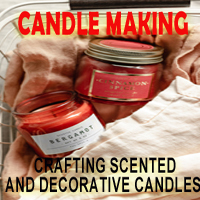


A Journey To Wellness And Vitality
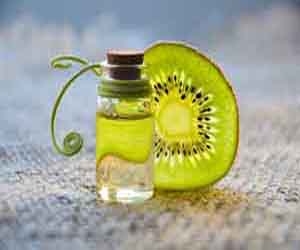
In a world filled with stress, pollution, and the demands of modern life, the quest for healing and rejuvenation has led many to explore the remarkable healing properties of nature. Whether found in plants, herbs, essential oils, or even minerals, these natural elements offer a holistic path to wellness and vitality. In this article, we'll delve into the world of healing properties and how they can transform our well-being.
The Wisdom Of Traditional Medicine: Many cultures around the world have relied on natural remedies for centuries. Traditional medicine systems like Ayurveda, Traditional Chinese Medicine, and Native American healing practices emphasize the use of natural elements to promote healing and balance in the body.
Plant-Based Healing: Plants are a rich source of healing properties. Aloe vera, for instance, has been used for centuries to treat burns and skin irritations. Turmeric is renowned for its anti-inflammatory and antioxidant properties. Ginkgo biloba is used to enhance memory and cognitive function.
Herbal Elixirs: Herbal remedies often take the form of teas, tinctures, or infusions. Herbs like chamomile and lavender are known for their calming effects, while Echinacea is a popular choice for boosting the immune system.
Essential Oils: Essential oils are highly concentrated extracts from plants and are used in aromatherapy and topical applications. Lavender oil promotes relaxation and sleep, while tea tree oil has potent antimicrobial properties.
Healing Crystals And Minerals: Crystals like amethyst, rose quartz, and citrine are believed to possess healing energies. They are often used in energy work and meditation to restore balance and harmony.
Holistic Approach: The healing properties of natural elements are not limited to physical ailments. They are also used to address mental and emotional well-being. Aromatherapy, for instance, can alleviate stress and anxiety.
Detoxification: Healing properties often include detoxification. Ingredients like dandelion root and milk thistle support the liver in removing toxins from the body.
Mind-Body Connection: Many healing practices recognize the deep connection between the mind and the body. Meditation, yoga, and mindfulness techniques harness the mind's power to promote healing.
The Power Of Touch: Therapeutic touch, massage, and acupuncture are healing modalities that involve physical interaction to alleviate pain, tension, and promote relaxation.
Balancing Energy: Practices like Reiki and acupuncture are based on the concept of energy flow in the body. By balancing this energy, they aim to restore health and vitality.
The journey into the world of healing properties is not just about seeking relief from ailments; it's about embracing a holistic approach to health and well-being. These natural remedies offer an alternative to the often side-effect-laden pharmaceutical solutions, and they empower individuals to take control of their health.
In a time where self-care and wellness are becoming paramount, the healing properties of nature have found a renewed relevance. By integrating these natural elements into our lives, we can embark on a journey to rediscover balance, vitality, and a profound sense of well-being. So, why not explore the healing properties of nature and experience the transformative benefits they can bring to your life?
 A Personal Touch: Handcrafted creations carry with them a unique, personal touch that simply cannot be replicated by machines. Each piece is a labor of love, a reflection of the artisan's skill, imagination, and passion. Whether it's a hand-carved wooden sculpture, a hand-stitched leather bag, or a hand-painted ceramic vase, the individuality of the artist is imprinted on the work, making it distinct and full of character.
A Personal Touch: Handcrafted creations carry with them a unique, personal touch that simply cannot be replicated by machines. Each piece is a labor of love, a reflection of the artisan's skill, imagination, and passion. Whether it's a hand-carved wooden sculpture, a hand-stitched leather bag, or a hand-painted ceramic vase, the individuality of the artist is imprinted on the work, making it distinct and full of character.
The Art Of Craftsmanship: Craftsmanship is at the heart of every handcrafted creation. Artisans invest time and effort honing their skills, often dedicating years to mastering their craft. This expertise shines through in the quality of their work. Every stitch, every brushstroke, every chisel mark is a testament to their commitment to perfection.
Uniqueness In Every Piece: In a world where identical, mass-produced items fill our lives, handcrafted creations stand as a beacon of uniqueness. Each piece is inherently one-of-a-kind, bearing its own imperfections, quirks, and distinctiveness. This individuality not only adds to the aesthetic value but also holds a certain sentimental charm for both the artist and the owner.
Sustainable And Ethical: Handcrafted creations are often associated with sustainability and ethical production. Artisans typically prioritize the use of natural, locally sourced materials, and the reduced carbon footprint makes these items eco-friendly. Additionally, the process of creating by hand often ensures that the production is more ethical and less exploitative compared to mass manufacturing.
Preservation Of Tradition: Many handcrafted traditions have been passed down through generations, preserving cultural heritage and age-old techniques. Artisans who create handcrafted items are often bearers of cultural traditions and the knowledge of time-honored methods. This continuity of tradition adds a profound layer of significance to each piece.
Nourishing Your Locks Naturally
 No Harmful Chemicals: Conventional haircare products often contain harsh chemicals that can strip hair of its natural oils and lead to damage and breakage. Organic haircare products are free from these potentially harmful chemicals, which means they're less likely to cause long-term damage to your hair.
No Harmful Chemicals: Conventional haircare products often contain harsh chemicals that can strip hair of its natural oils and lead to damage and breakage. Organic haircare products are free from these potentially harmful chemicals, which means they're less likely to cause long-term damage to your hair.
Environmentally Friendly: Organic haircare brands often prioritize sustainable and eco-friendly practices. They use ingredients sourced from ethical and sustainable suppliers and package their products in recyclable or biodegradable materials. This reduces the environmental impact of haircare routines.
Nourishing Ingredients: Organic haircare products often contain nourishing and hydrating ingredients like aloe vera, coconut oil, argan oil, shea butter, and essential oils. These natural components provide moisture, shine, and strength to your hair.
Safer For Color-Treated Hair: For those who color their hair, organic haircare products can be gentler and safer. They help maintain the vibrancy of hair color without the risk of fading or damage.
Holistic Hair Health: Organic haircare takes a holistic approach to hair health. It emphasizes the interconnectedness of overall well-being with healthy hair. A well-balanced diet, adequate hydration, and reduced stress are all factors that contribute to the well-being of your hair.
Gentler On Sensitive Scalps: Organic haircare products are formulated with milder, natural ingredients that are less likely to irritate sensitive scalps. They can help alleviate issues like dandruff, itchiness, and flakiness without causing further discomfort.
Cruelty-Free: Many organic haircare brands are cruelty-free, meaning they don't test their products on animals. This ethical stance aligns with the principles of compassionate consumerism.
Efficacy And Results: Organic haircare products are often equally or even more effective than conventional products. Natural ingredients like aloe vera and argan oil are known for their ability to restore, strengthen, and rejuvenate hair.
Exploring Beer Ingredients
 Water may seem unassuming, but it is arguably the most critical ingredient in brewing. Its composition, mineral content, and purity greatly affect the final beer. Different regions with unique water sources contribute to distinct beer styles. For instance, the soft water of Pilsen, Czech Republic, played a pivotal role in the creation of the world-famous Pilsner lager.
Water may seem unassuming, but it is arguably the most critical ingredient in brewing. Its composition, mineral content, and purity greatly affect the final beer. Different regions with unique water sources contribute to distinct beer styles. For instance, the soft water of Pilsen, Czech Republic, played a pivotal role in the creation of the world-famous Pilsner lager.
Malt: The Heart Of The Brew
Malt, typically derived from barley but sometimes wheat, rye, or other grains, serves as the primary source of fermentable sugars in beer. It undergoes a malting process, which involves soaking, germinating, and drying the grain to convert the starches into fermentable sugars. The variety of malt used, the degree of roasting, and the kilning process determine the color, flavor, and body of the beer. Lightly roasted malts contribute to pale lagers, while deeply roasted malts produce rich, dark stouts and porters.
Hops: The Spice Of Beer
Hops are the flowers of the hop plant and provide the bitterness, aroma, and flavor to beer. The bitterness in beer balances the sweetness of the malt, while the aromatic and flavorful qualities create the beer's distinctive taste. The choice of hop variety and the timing of hop additions during brewing greatly influence the final product. Some beer styles, like the hoppy and aromatic India Pale Ale (IPA), showcase the extensive use of hops, while others, like Belgian ales, use hops more conservatively, emphasizing yeast character.
Yeast: The Magical Microorganism
Yeast, the smallest but most vital ingredient, is responsible for fermentation, the process that transforms the sugars in the malt into alcohol and carbon dioxide. Yeast strains vary in their fermentation characteristics, producing different flavors, aromas, and esters in beer. The yeast strain used is a defining factor in the creation of specific beer styles. Ale yeast, with its higher fermentation temperatures, imparts fruity and estery notes, while lager yeast, fermented at cooler temperatures, yields cleaner and crisper flavors.
Unwinding Your Senses And Elevating Well-Being
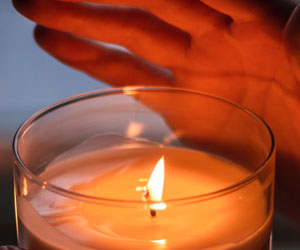 The Science Of Aromatherapy
The Science Of Aromatherapy
Aromatherapy is a holistic healing practice that uses essential oils, which are extracted from plants, to promote physical and emotional well-being. These essential oils contain natural compounds that have a range of therapeutic benefits. When inhaled, these compounds interact with the olfactory system and the brain, triggering various responses.
Aromatherapy through candles operates on this very principle. As the candle burns and releases the fragrance of the essential oils blended into the wax, these scents enter our respiratory system, affecting our mood, stress levels, and overall health.
Choosing The Right Aromatherapy Candle
The journey into the world of aromatherapy candles begins with selecting the right candle for your needs. Here are a few factors to consider:
Fragrance: The choice of fragrance depends on your goals. Lavender is known for its calming properties, making it perfect for relaxation and sleep. Citrus scents like lemon and orange are invigorating and ideal for boosting energy and focus.
Quality: Ensure that the candle you choose uses high-quality essential oils. The purity of the oils can significantly affect the therapeutic benefits.
Wax Type: Natural waxes like soy and beeswax are often preferred for aromatherapy candles because they burn cleanly and don't produce harmful toxins.
Crafting Your Way To Inner Peace
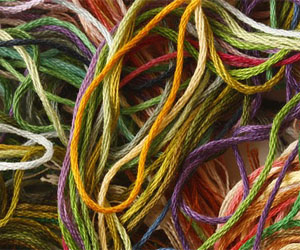 Handmade serenity is a form of active meditation. As you immerse yourself in your craft, you enter a state of flow, where time seems to stand still, and you're completely absorbed in the process. This meditative quality of crafting can be profoundly calming and is akin to mindfulness meditation, a practice proven to reduce anxiety and promote mental and emotional well-being.
Handmade serenity is a form of active meditation. As you immerse yourself in your craft, you enter a state of flow, where time seems to stand still, and you're completely absorbed in the process. This meditative quality of crafting can be profoundly calming and is akin to mindfulness meditation, a practice proven to reduce anxiety and promote mental and emotional well-being.
The tactile nature of handmade creations has a soothing effect on your senses. Feeling the textures, seeing the colors, and manipulating the materials can be a sensory experience that grounds you in the moment. Whether you're kneading dough for homemade bread, shaping clay into pottery, or sewing fabric into a quilt, your senses come alive, enhancing your connection to the world around you.
Moreover, handmade serenity is about the sense of accomplishment that comes with completing a project. Seeing your creations come to life can be incredibly rewarding, instilling a sense of pride and purpose. It's a tangible representation of your creativity and effort, and this feeling of achievement can boost your self-esteem and sense of self-worth.
Crafting also allows you to take control of your surroundings. You can make your home more inviting and cozy with handmade decor, such as quilts, paintings, or handcrafted furniture. These pieces carry a personal touch that can transform your living space into a sanctuary of serenity, providing a refuge from the chaos of the outside world.
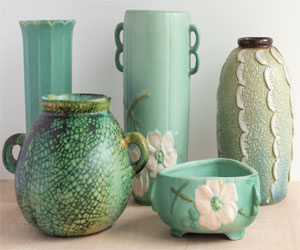 Handbuilding: Handbuilding is one of the most fundamental and versatile techniques in pottery. It involves using the hands to shape the clay. This can be done through techniques such as pinching, coiling, and slab-building. Pinching entails squeezing and forming the clay, coiling is the process of building up the form with clay ropes, and slab-building involves using flattened sheets of clay to construct objects. Handbuilding allows for a great deal of artistic expression and often results in unique, irregular forms.
Handbuilding: Handbuilding is one of the most fundamental and versatile techniques in pottery. It involves using the hands to shape the clay. This can be done through techniques such as pinching, coiling, and slab-building. Pinching entails squeezing and forming the clay, coiling is the process of building up the form with clay ropes, and slab-building involves using flattened sheets of clay to construct objects. Handbuilding allows for a great deal of artistic expression and often results in unique, irregular forms.
Wheel-Throwing: Wheel-throwing, or throwing, is a technique where the potter shapes clay on a rotating wheel. The wheel's motion allows for even and symmetrical forms, making it ideal for creating functional items like bowls, cups, and vases. Potters use their hands and various tools to manipulate the clay as it spins, drawing upon their skill and precision to achieve the desired shape and texture.
Coiling: Coiling is a method where clay ropes or coils are stacked and joined together to create a three-dimensional form. It is one of the oldest pottery techniques, with historical examples dating back thousands of years. Coiling provides both strength and flexibility, making it suitable for constructing larger vessels and sculptural pieces.
Slab-Building: Slab-building entails rolling out flat sheets of clay and cutting them into shapes that are assembled to create an object. It allows for the creation of more geometric and angular forms. Artists can also add texture and design elements to the slabs before assembly, resulting in visually striking pottery.